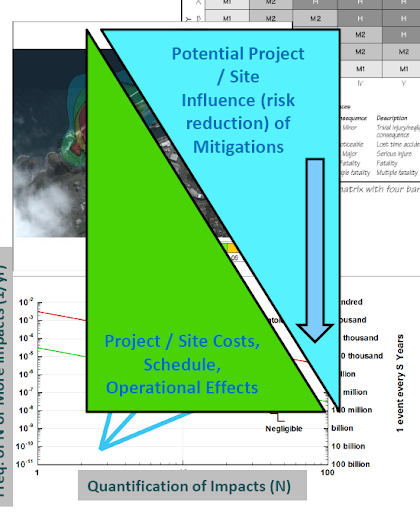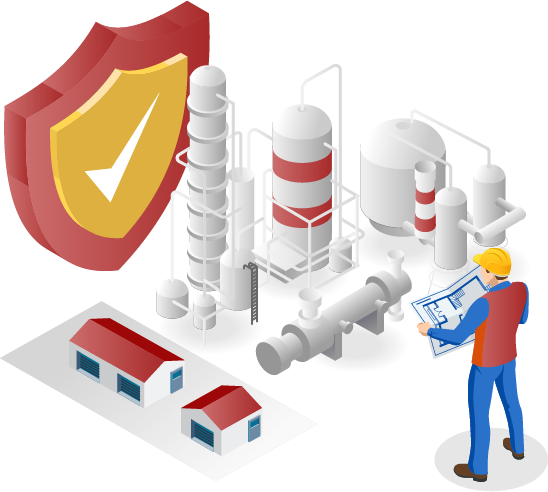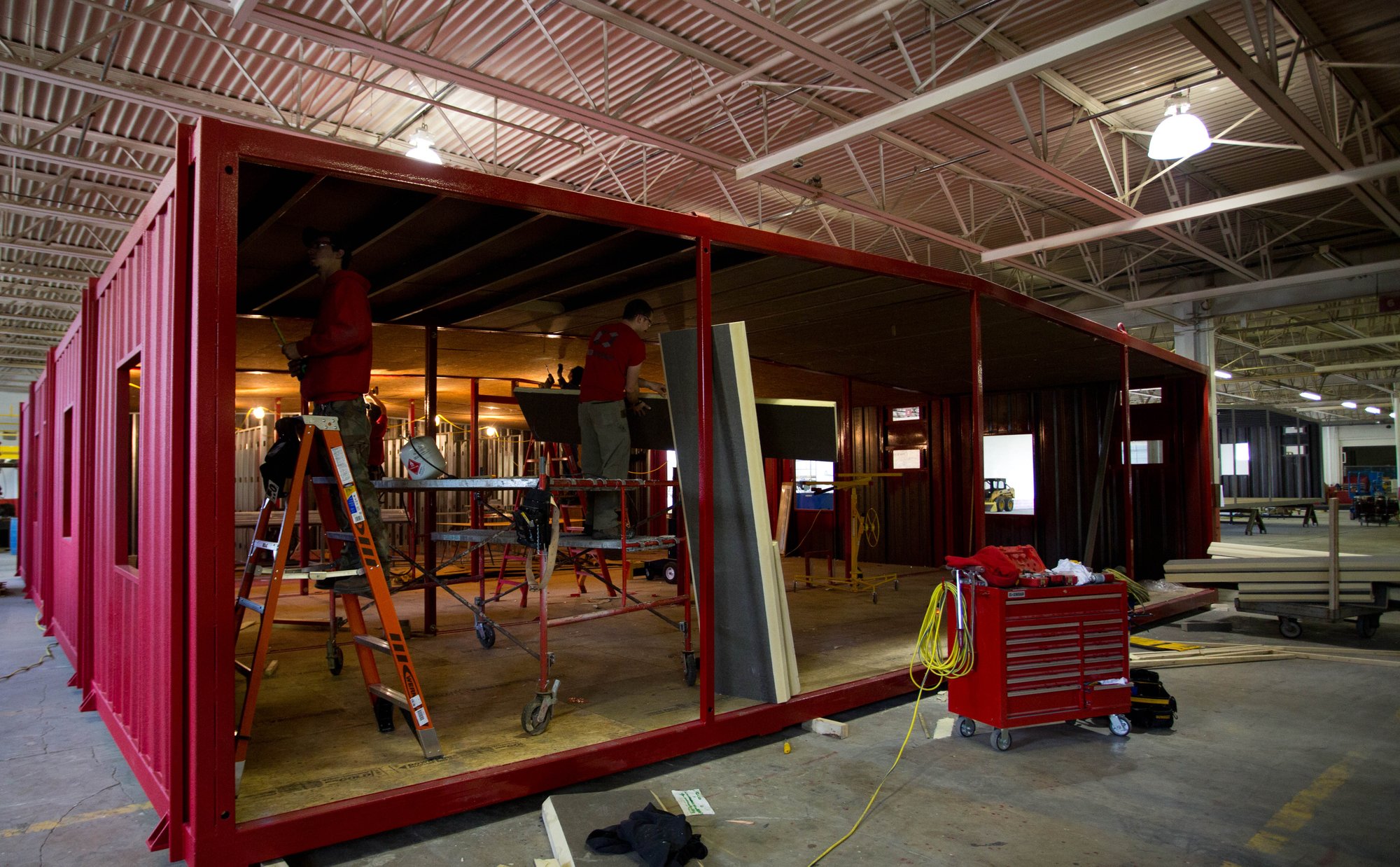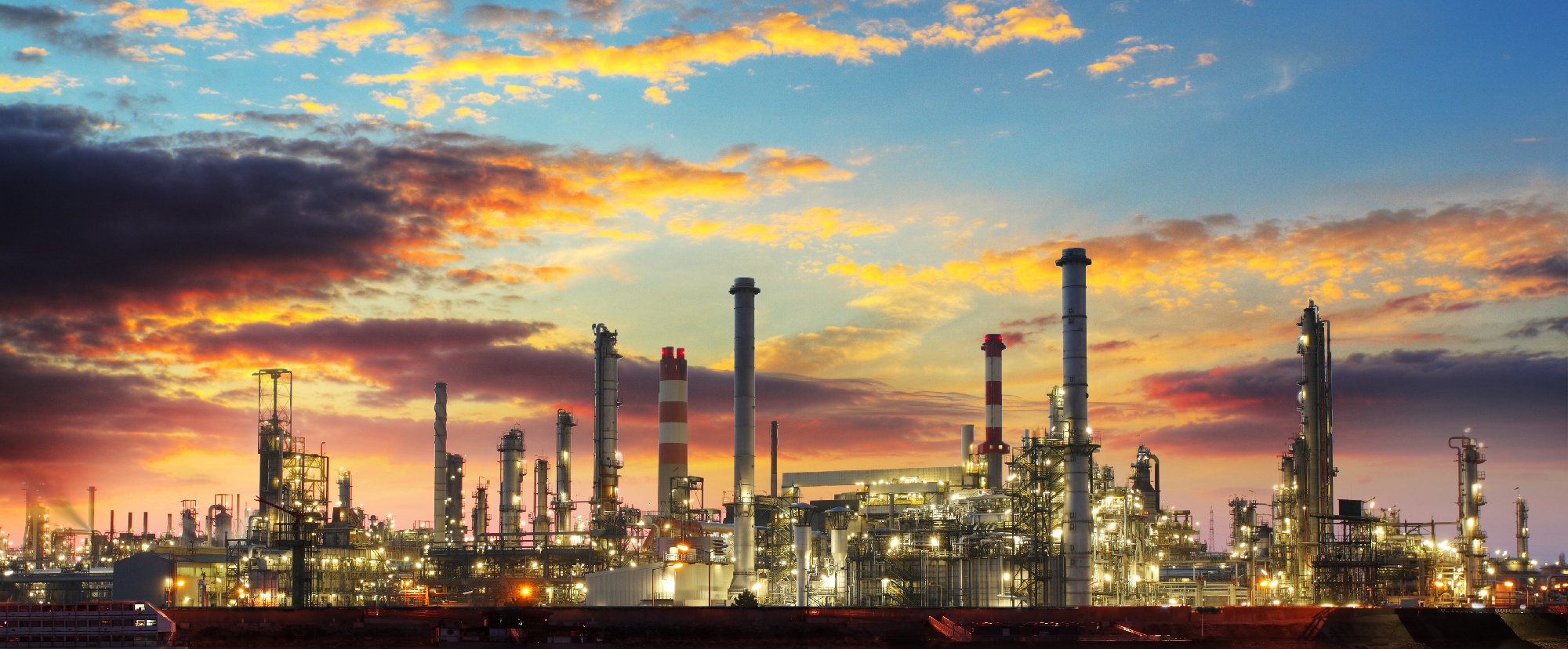Petrochemical facilities provide the essential chemicals, fuels, and products we rely on daily in today's world. From refining crude oil to transporting the finished products through an intricate network of pipelines and transportation systems, this process is science in action. However, as with any complex industrial process, safety is paramount. With so much at stake, it's essential to take necessary precautions to protect workers, equipment, and the surrounding environment.
If you're considering expanding a petrochemical facility, it's critical to understand the unique challenges and considerations that come with this complex process. From design and construction to ongoing operations, every step requires careful planning and execution. We've created this guide to help you navigate the many factors involved in expanding a petrochemical facility.
One key consideration is the use of blast resistant buildings. These specialized structures offer superior protection against explosions, fires, and other hazardous events that can occur in petrochemical facilities. With their unique design and construction, blast resistant buildings provide protection for workers and equipment, reducing the risk of injury or damage in the event of an explosion.
In this guide, we'll explore the benefits and considerations of using blast-resistant buildings in petrochemical facilities. From design and construction to ongoing maintenance, we'll cover some of the details you need to know to ensure the safety and success of your petrochemical facility expansion.
In today's fast-paced world, the key to successful project management is the ability to adapt and grow with the company. That's why modern project approaches emphasize the importance of building a comprehensive model of the facility that can evolve alongside the organization. As a project progresses, the cost of making changes increases exponentially, making it essential to plan carefully from the outset. Oversights or missed details in the early stages of a project can cause a domino effect of issues, leading to costly and time-consuming fixes down the line. This is why conducting a thorough planning phase is crucial to ensure that all necessary requirements are identified, and the facility expansion meets the necessary standards. By investing time and resources in the early stages of a project, companies can save themselves significant expenses and headaches down the road.

Working with an EPC (Engineering, Procurement, and Construction) firm is important for petrochemical facility expansion because it provides a single responsible source for executing the project, thus alleviating risk for the owner.
By allowing the oil and gas company to focus on its core business processes, EPC services transfer budget, performance, and schedule risks from the owner to the contractor. Additionally, an EPC contractor can leverage industry expertise and experience to build a facility in less time and for less capital than an owner, due to the appropriate engineering, labor resources, and efficient communication and collaboration between workgroups.
EPC firms also offer a single point of responsibility for the project, meaning the owner or operator only has to give specifications and design requirements to one contractor instead of negotiating dozens of contracts for various parts of the project. This provides clarity on who is responsible for addressing any issues that may arise during the project.


Before embarking on a petrochemical facility expansion project, it is critical to conduct an assessment of the current facility and operations. This assessment should include a comprehensive review of the existing equipment and infrastructure to identify any potential bottlenecks, capacity constraints, or areas that need upgrading. A review of current operations will help to identify areas of inefficiency and areas that need improvement. This assessment will provide a baseline for the petrochemical company to evaluate the expansion's effectiveness and identify areas for improvement.
Conducting thorough market analysis and demand forecasting is necessary to determine the feasibility of expanding a facility. This process begins by defining the demand for the products and identifying the market trends. This is to determine whether expanding the facility will be profitable. Next, evaluate the current and future market conditions, including prices, demand, competition, and regulatory requirements. This information will inform the company's decision on the type and size of the expansion to undertake.

Expanding a petrochemical facility is a significant undertaking that can have a profound impact on the environment. As such, it's essential to conduct an environmental impact assessment to evaluate the potential impact of the project. This assessment should consider the impact on air, water, and soil quality, as well as the impact on wildlife and their habitats. By assessing the project's environmental impact, the company can make informed decisions about the feasibility of the expansion and identify measures to mitigate any adverse effects.
At the heart of the environmental impact assessment is a commitment to responsible and sustainable business practices. By prioritizing the environment, companies can ensure that their expansion projects are aligned with their values and contribute positively to the communities they serve.

Expanding a petrochemical facility can come with a hefty price tag, so it's important to carefully plan out the budget and financing options. The company should factor in all costs associated with the expansion, such as construction and equipment expenses, along with any other related costs. It's also important to weigh different financing options, such as taking on debt or selling equity, or perhaps a mix of both, to determine which option is the most cost-effective.
One important consideration for petrochemical facility expansion is the implementation of blast resistant buildings. Blast resistant buildings are designed to withstand the effects of an explosion or other catastrophic event, and are essential for ensuring the safety of personnel and equipment in a petrochemical facility. When considering the implementation of blast resistant buildings, it is important to take into account factors such as initial cost and budget constraints, site location and layout, compatibility with existing infrastructure and equipment, and maintenance and upkeep requirements.
Addressing hazards and risks during the design phase of a project is crucial to avoiding costly mitigation and modification measures later on. To this end, the industry has coined terms like "Safety-Informed Design," "Risk-Informed Design," and "Design Safe" to emphasize the importance of integrating safety considerations from the start. Instead of assuming a certain level of blast resistance, for instance, project teams should analyze the specific requirements for their building and avoid unnecessary expenses.
When it comes to expanding a petrochemical facility, there are various options and strategies available to companies. Each option has its pros and cons, and companies need to carefully consider their goals, budget, and resources before making a decision.

One of the primary determinations that companies must make in planning a petrochemical facility expansion is whether to undertake an expansion of their current facility or construct a new one. Expanding an existing facility offers advantages, such as the capacity to leverage established infrastructure and equipment, reduced land acquisition expenses, and a shorter timeline for completion. Nevertheless, expanding an existing facility also presents certain difficulties, such as the need to manage ongoing operations during construction, potential disruptions to existing processes, and limited space for expansion.
Building a new facility affords companies greater flexibility in terms of design and layout and may aid in mitigating certain challenges associated with expanding an existing facility. However, it can be more expensive and time-consuming and may require additional resources and expertise.

Another critical consideration is selecting the most suitable location for the expansion. The location of the expansion can impact several factors, including access to raw materials, transportation infrastructure, labor availability, and regulatory requirements. Companies should conduct a thorough analysis of potential locations and consider factors such as the availability of land, environmental concerns, and community support before making a decision.
Advances in technology have led to the development of more efficient and environmentally friendly equipment, which can help to reduce costs and increase production capacity. However, integrating new tech can also be complex and may require additional resources and training for staff. Companies should carefully evaluate their current and future needs and work with their suppliers to identify the most suitable technology and equipment for their expansion plans.

Blast resistant buildings are designed to withstand high-pressure events, such as explosions or fires, and can help to protect workers, equipment, and infrastructure. Some of the key advantages of using blast resistant buildings in petrochemical facility expansion include:
By using blast resistant buildings, petrochemical facilities can reduce the risk of injury or fatalities in the event of an incident.
The use of blast resistant buildings can help companies to meet regulatory requirements and industry standards related to safety and security. By demonstrating a commitment to safety, companies can also enhance their reputation and build trust with stakeholders.
Although blast resistant buildings may be more expensive upfront, they can reduce costs in the long run by mitigating the risks of property damage, downtime, and legal liabilities. By investing in blast resistant buildings, companies can also potentially benefit from reduced insurance premiums.


The cornerstone of any successful expansion project is the establishment of clear and measurable project goals and objectives. This initial step involves carefully defining the scope of the project, identifying the desired outcomes, and establishing key performance indicators (KPIs) to measure progress and achievement. Armed with this information, all stakeholders can work collaboratively towards the same end goal, ensuring a focused and streamlined project execution.

Developing a project schedule involves breaking down the project into smaller, manageable tasks, estimating the time and resources needed to complete each task, and scheduling each task in a logical sequence. The project schedule should include milestones and deadlines to ensure that the project stays on track and is completed on time.
Effective communication and collaboration with stakeholders will ensure that the project runs smoothly and that everyone is working toward the same goals. It is also essential to establish clear duties for each stakeholder and to ensure that everyone understands their roles and responsibilities.

Ensuring compliance involves understanding the regulations and standards that apply to the project, ensuring that the project is designed and executed in compliance with these regulations, and obtaining any necessary permits or approvals. Working with an EPC firm can help ensure that you are meeting all regulatory requirements.
One key aspect of compliance is process safety management, which involves identifying and analyzing potential hazards associated with the processing and handling of hazardous chemicals through a process hazard analysis (PHA). By conducting a PHA, an organized and systematic effort is made to identify and analyze the significance of potential hazards, helping to ensure that the project is safe, sustainable, and environmentally responsible.


During the Process Hazard Analysis (PHA), a facility has the option to choose a quantitative risk analysis (QRA) or a facility siting study (FSS).
A FFS is a comprehensive assessment of the spacing and placement of both permanent and temporary buildings and equipment in chemical processing plants. Its purpose is to ensure that buildings are situated at safe distances in relation to process units. However, it goes beyond optimizing distances. This study identifies and documents potential blast, fire, and toxic hazards in a petrochemical facility. It also examines threats associated with both existing and future-occupied buildings.
A QRA is an advanced risk-based study that quantifies the most critical risks, encompassing all the information of a facility siting study but offering a more comprehensive analysis. It also satisfies the recurring OSHA requirement, mandated every five years in the PHA process. One key distinction of QRAs is the inclusion of statistical probability. This element helps mitigate some of the inherent conservatism in the analysis, allowing companies to make decisions based on their specific risk tolerance.
While a facility siting study is more cost-effective and quicker, being based on Maximum Credible Events (MCEs) and yielding conservative results, this conservatism could potentially impact decisions related to modifying existing occupied buildings or planning for future-occupied buildings. Larger companies and facilities typically find greater advantages in opting for the risk-focused QRA approach.
At RedGuard, we assist our customers in obtaining an FSS or a QRA through qualified and industry-leading third-party firms. We believe this third-party layer is important in assessing a facility’s needs, in an unbiased manner. If you’ve received a recommendation for buildings to meet your safety needs from the same company who did the hazards assessment, it is imperative to get a second opinion. In fact, RedGuard representatives will also assist in finding third-party evaluations of existing studies, providing valuable guidance to enhance safety and risk management strategies. Because we feel that this second opinion is of utmost importance, we do this at no charge to the customer.
When it comes to concrete modular buildings, they are delivered "bare bones," with no interior finishes and no systems installed. Rather than simply connecting the electrical, plumbing, and communications systems, they will have to be installed. More installers and skilled laborers will need access to the work site and, depending on the size of the project, it could be months of work. This can be an inefficient and risky process, especially for blast resistant buildings that require specialized training and can be dangerous to work on.
At RedGuard, we believe that this work should be completed ahead of time. That's why our steel blast resistant buildings are built off-site and then simply put together on-site. By prefabricating components off-site, we can reduce the amount of time required for installation and reduce the risk of on-site accidents. This approach also allows for more efficient use of resources, reducing waste and cutting costs.
Building off-site can also limit liability. By manufacturing building components off-site, we can reduce the number of workers on the construction site for a shorter period of time. This means fewer potential accidents and injuries, which is especially important for blast resistant buildings that require specialized training and can be dangerous to work on. Additionally, by reducing the risks associated with transporting materials to the construction site, we can minimize the potential for accidents and injuries at petrochemical facilities.

Addressing potential challenges can ensure the project stays on track, on budget, and is completed safely.

One of the most significant challenges in any construction project is managing costs and preventing budget overruns. The expansion of a petrochemical facility is no exception.
It is important to set a realistic budget and ensure that costs are tracked throughout the project. Any changes to the scope of the project should be carefully considered, as they can impact the budget. Working with experienced contractors and suppliers who can provide accurate cost estimates and stick to the budget can also help prevent budget overruns.

Despite careful planning, unexpected issues or delays can still occur during a petrochemical facility expansion project. It is important to have contingency plans in place to address any issues that arise. This can include having backup suppliers, contingency schedules, and alternative solutions for any unexpected issues.
Effective communication and collaboration among stakeholders, including contractors, suppliers, and regulatory agencies, can also help prevent unexpected issues and delays. Keeping everyone informed and up-to-date on the progress of the project can help ensure that any potential issues are addressed before they become significant problems.
Safety is a top priority during any construction project, and this is especially true in the petrochemical industry. Petrochemical facilities involve hazardous materials and processes, making safety critical to protect workers and the surrounding community.
Regular safety audits and inspections can help identify potential hazards and ensure that safety protocols are being followed. Providing comprehensive safety training to all workers and contractors involved in the project can also help minimize risks and prevent accidents.

Blast resistant buildings play a crucial role in protecting workers and equipment from the impact of explosions. Not only are they designed to withstand the force of an explosion, but they can also be built off-site and easily installed, saving time and reducing the number of workers required on-site. This approach not only minimizes liability and safety risks, but also enhances efficiency and productivity.
RedGuard, a leading provider of blast resistant buildings, offers customizable solutions to meet the specific needs of petrochemical facilities. Our blast resistant buildings are made from steel, which is known for its excellent resistance to blast forces, durability, and corrosion resistance. This makes them a perfect fit for the harsh environments of petrochemical facilities.
Expanding a petrochemical facility is a complex task that requires a comprehensive approach, taking into account all aspects of the project and involving all stakeholders. It's not just about expanding the facility but about creating a sustainable solution that meets the current market demands while ensuring the safety and efficiency of the project in the long run.
To achieve this, assess the current facility's strengths and weaknesses, analyze the market demand, and integrate new technology that complements the existing infrastructure. It's also vital to comply with industry standards and regulations to avoid any legal and environmental issues, as well as to protect workers and equipment.
We highly recommend partnering with an experienced EPC firm to guarantee the project’s success. This will ensure that the project runs smoothly from start to finish, with the necessary resources.
The use of blast-resistant buildings is another crucial factor that must not be ignored as they provide unparalleled protection against dangerous events that may occur within the facility. These specialized structures are designed to significantly reduce the risk of injury and damage caused by unforeseen accidents, making them an indispensable component of any petrochemical facility expansion project. By prioritizing safety and integrating blast-resistant buildings into the design and construction process, companies can mitigate risks and create a secure work environment for employees, ultimately leading to a more successful and sustainable operation.
If you need a building that can provide superior protection against hazardous events in petrochemical facilities, contact RedGuard today. We are happy to answer any questions and help you determine the best buildings to support your facility expansion.
Your safety partner in threat mitigation for hazardous areas, providing safe spaces through customizable, scalable, modular buildings. The industry leader in blast-resistant buildings.